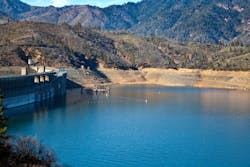SACRAMENTO, Calif. — Increased groundwater pumping in California is causing the San Joaquin Valley to sink at a rate of nearly two inches per month, faster than ever before, according to a press release.
The California Department of Water Resources released the information which was collected by NASA in a new report titled "Progress Report: Subsidence in the Central Valley, California," stated the release.
Because of increased pumping, groundwater levels are reaching record lows — up to 100 feet lower than previous records," said Department of Water Resources Director Mark Cowin. "As extensive groundwater pumping continues, the land is sinking more rapidly and this puts nearby infrastructure at greater risk of costly damage."
The state has experienced the sinking land because of groundwater pumping, or subsidence, for decades, noted the release. Now, however, NASA reports infrastructure is at growing risk of damage because the sinking is happening faster.
Subsidence increases risk for damage to infrastructure such as aqueducts, bridges, roads and flood control structures, reported the release. Thousands of public and private groundwater well casings in the San Joaquin Valley have already been destroyed.
Authorities are working with communities to build on the 2014 Sustainable Groundwater Management Act, "which requires local governments to form sustainable groundwater agencies that will regulate pumping and recharge to better manage groundwater supplies," shared the release. Counties can also receive assistance from the Department of Water Resources with a new $10 million program.
NASA will continue monitoring to identify more vulnerable areas, noted the release.
You can find the entire release here.
